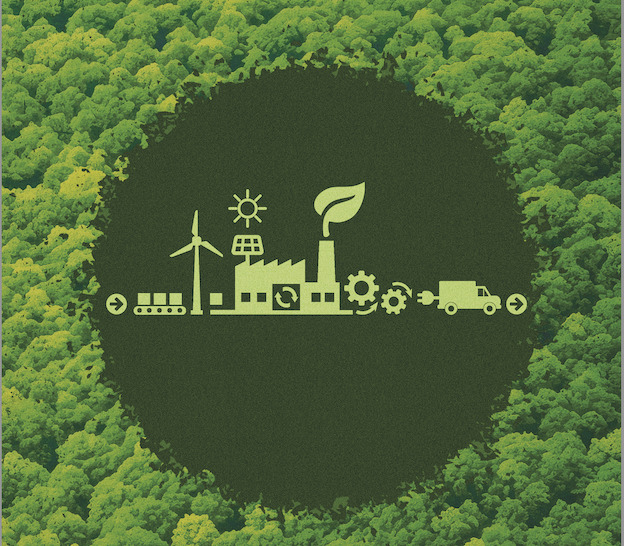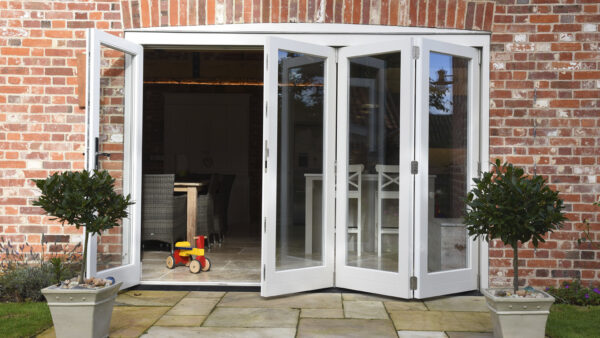Building sustainable credentials and being able to demonstrate carbon calculations will enable product suppliers to the construction industry to not only help meet net zero challenges but also gain a competitive edge. Dan Rising reports.

Delivering net zero buildings is construction’s next big challenge. In October 2021 the UK government published its Net Zero Strategy with the intention of setting out a pathway to reaching net zero greenhouse gas emissions by 2050. As the construction industry is responsible for 39% of global carbon emissions it places a huge obligation on all stakeholders to make drastic changes to the way projects are approached. The sector needs to ensure that any building it puts up results in a minimal carbon impact – from the materials and processes used to build it, the amount of energy used in its operation and maintenance, any refurbishment work and ultimately its end-of-life disposal.
Raising material awareness
Material manufacturers play a fundamental role in providing designers of buildings with not just a declaration of their commitment to net zero targets as a business, but also to playing a supporting role in defining the embodied carbon calculations for the products supplied. And that’s on a project-by-project basis. It’s now pivotal to consider the carbon cost of a project, both during the construction phase and beyond.
When it comes to construction, it is both the embodied carbon and operational carbon that need to be accurately calculated before a project commences. How much carbon will be emitted at all stages of the development, from concept to completion? Carbon cost needs to sit at the heart of projects for the construction industry to even be in with a chance of hitting net zero carbon emissions by 2050.
Bringing embodied carbon upfront
Hardware manufacturers may not be able to affect a project’s operational carbon, but they can have an impact on the embodied carbon from their products.
The factors affecting a product’s carbon cost go much further than the raw materials used, and the manufacturing process undertaken to create it. It’s about more than just material and product choices. Anything from the transportation of goods, the fuel it takes to get the work force to site (in both sourcing the raw materials and manufacturing the product), and the amount of waste produced, can be recorded to determine the real impact the choice of product has had.
To stay ahead of the curve and remain competitive in this space, it’s vital for suppliers and manufacturers of product to not only cost a project in monetary terms, but also the total carbon cost. If accurate calculations are not easy to access for the building designers’ life cycle assessment, you can guarantee that an alternative product that can, is likely to be specified.

Calculating cradle to grave
Embodied carbon figures normally encompass emissions from all the raw materials’ extraction, transport and manufacturing processes required before products are ready at the factory for delivery to the customer. It should also cover transport to site, installation impacts, maintenance such as cleaning, repairs, replacement and refurbishment of the products, and the impacts associated with the product’s end of life, such as recycling and disposal.
“To stay ahead of the curve and remain competitive in this space, it’s vital for suppliers and manufacturers of product to not only cost a project in monetary terms, but also the
total carbon cost”
Whole life carbon costs are therefore influenced by durability – component replacement interval, maintenance activities and frequency as well as the supplied product’s initial carbon cost. BRE published a national methodology for assessing the cradle to grave environmental impacts of construction products with the Environmental Profiles Methodology published in 1999. This type of analysis should be considered our marker in the sand. Environmental Product Declarations (EPDs) are no longer a reasonable method of assessment, they are simply static data.
Project specific declarations
EPDs do not require data to be provided for the life cycle stages beyond the manufacturing plant, and so users of EPDs need to include the data for the product’s life cycle scenario beyond that, relevant for the building in which they are using the product.
For example, an EPD for a product manufactured in the Far East will not be specific to the transport required for its intended project’s location, most likely
its transport carbon will be based on it staying within the continent of origin. Similarly, the service life and maintenance provided for the product may relate to an internal installation in the same continent, rather than an external installation in the
UK for example.
Furthermore, the end-of-life scenario may be based on typical disposal in the country of origin, where the end-of-life material may result in a mix of recycling and landfill, whereas in Europe, the end-of-life product would be used for energy recovery.
EPDs are based on assumption, rather than being project-use specific. The AI industry has the technical ability and the responsibility to not rely on assumed scenario performance declarations. It is capable of working with the designers of buildings, providing accurate whole life costs from the sourcing of raw materials, through manufacturing and finishing, to the installation of the product on site. Most importantly, it should be prepared to stand by the carbon cost of its individual products, be proud of them, or seek ways to reduce them.
Dan Rising is national sales manager, CES Security Solutions.

Go circular: Re-using materials is vital to reducing embodied carbon.
The UK’s construction sector could reduce its emissions by two-thirds within 12 years solely by cutting its use of raw materials, a new report from Green Alliance has concluded. The report confirms that the construction sector is the UK’s biggest user of non-renewable materials and the biggest producer of waste. Given that much of the raw material used is high in embodied carbon, a failure to make the construction sector more circular will likely mean it is unable to reach net-zero in line with the Government’s legally binding 2050 deadline, Green Alliance warns.
Green Alliance is calling on the UK government to lead by example and set a target to reduce raw material use in construction by at least one-third by 2035. Key to delivering this target will be ensuring that developers can reuse materials already in use.
Danish firm dline has already taken action. In May it announced an industry first in that it will enter the circular economy with its ‘re-handled’ initiative. Paul Martin, MD, told AIJ: “This is not a single adventure, as we need other businesses to join with similar ventures, otherwise we will not have the legacy regarding sustainability that our planet needs in the future.
“We hope our business making a change with circular economics, will influence others. I believe we are the only manufacturer talking about reversing our logistics right now.”








